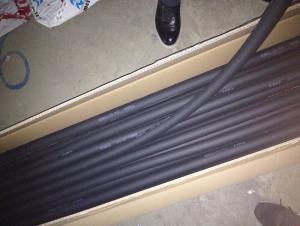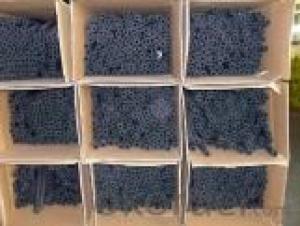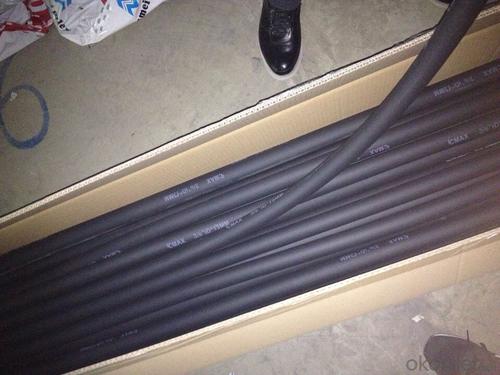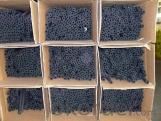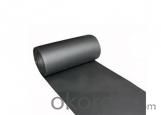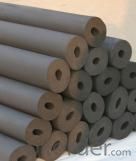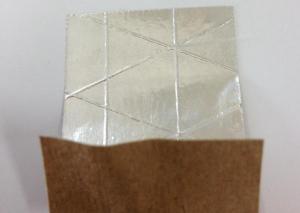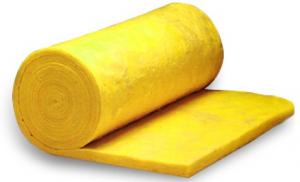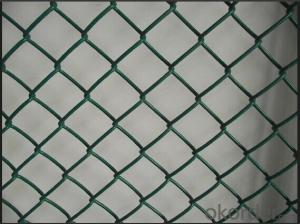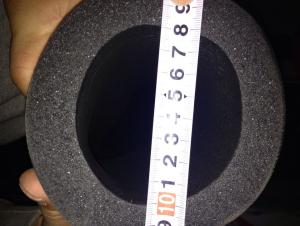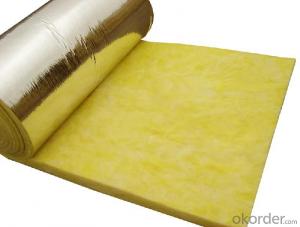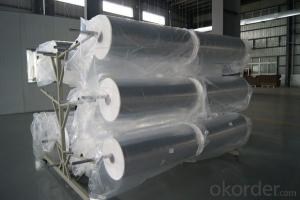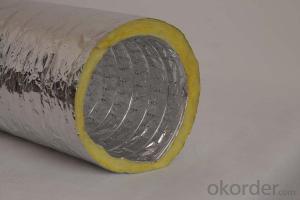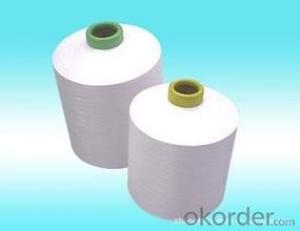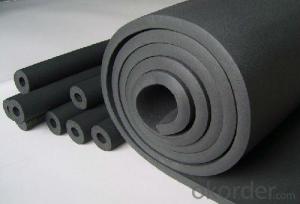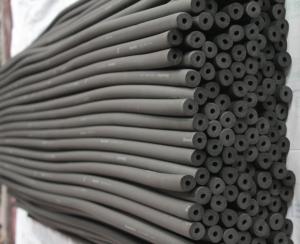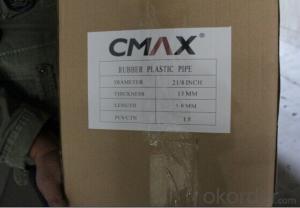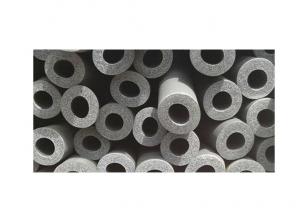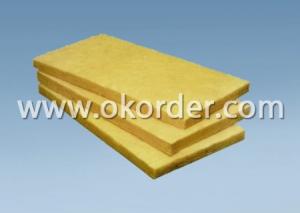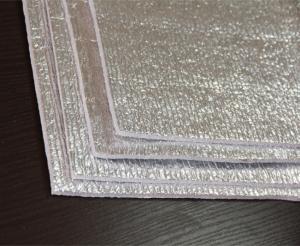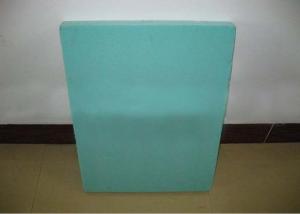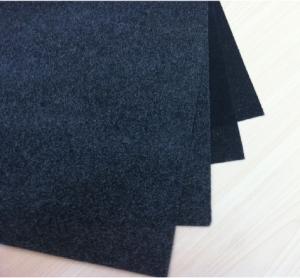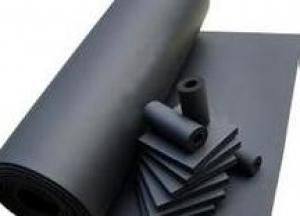Insulation Rubber Plastic for Heating
- Loading Port:
- China Main Port
- Payment Terms:
- TT or LC
- Min Order Qty:
- -
- Supply Capability:
- -
OKorder Service Pledge
OKorder Financial Service
You Might Also Like
1. Flexible Rubber Plastic Insulation Material Product Description
Rubber plastic is a high quality heat-insulating and heat-preservation material which use but yronitrile rubber and polyvinyl chloride(NBR,PVC) as main raw materials. The production process includes mixing, tensing and continuous extruding , heating and foaming.
2.Main Features of Rubber Plastic
-Lower heat-conductivity-Higher fire-blocking performance-Damp-proof and Water-proof-Softness-Neat and -Easy to install easy handing and storage-Good flexibility and tenacity
3.Rubber Plastic Images
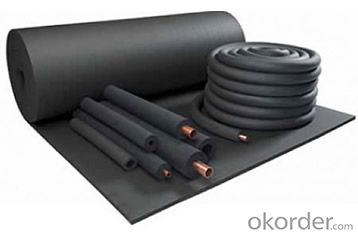
4.Rubber Plastic Specification --Rubber Plastic Sheet
Density(kg/m3) | 40-90 | ||||
Thickness(mm) | 10 mm | 15 mm | 20 mm | 25 mm | 30 mm |
Length (m) | 20 | 20 | 10 | 10 | 10 |
Width (m) | 1.5 | 1.5 | 1.5 | 1.5 | 1.5 |
5.FAQ
①How about your company?A world class manufacturer & supplier of HVAC materials,is one of the large-scale professional investment building materials production bases in China.
②How to guarantee the quality of the products?We have established the international advanced quality management system,every link from raw material to final product we have strict quality test;We resolutely put an end to unqualified products flowing into the market. At the same time, we will provide necessary follow-up service assurance.
③How long can we receive the product after purchase? In the purchase of product within three working days, We will arrange the factory delivery as soon as possible. The pecific time of receiving is related to the state and position of customers. Commonly 7 to 10 working days can be served.
- Q: Is it possible to use aluminum foil with a reflective side to wrap sandwiches?
- <p>Yes, you can use aluminum foil facing to make sandwiches. The reflective side of aluminum foil is food-safe and can be used to wrap sandwiches for storage or transportation. It helps to keep the sandwich fresh and prevents it from drying out. However, it's important to ensure the foil is clean and free from any sharp edges that might tear the bread or packaging. Additionally, it's best to avoid using foil with non-stick coatings on the inside when in contact with food.</p>
- Q: Can aluminum foil be used as a substitute for a pizza stone or baking sheet when making pizza?
- <p>Yes, you can use aluminum foil as a makeshift surface for making pizza if you don't have a pizza stone or baking sheet. However, it may not provide the same even heat distribution or crispiness as a pizza stone. Ensure the foil is heavy-duty to prevent tearing and preheat it with the oven to get a better result. Keep in mind that the foil can reflect heat, which might affect the bottom crust's texture. It's a good alternative, but for consistent quality, using a proper pizza stone or baking sheet is recommended.</p>
- Q: Is it possible to use aluminum foil with a reflective side to line a cake tin for baking purposes?
- <p>Yes, you can use aluminum foil facing to line a cake tin before baking. It helps in creating a smooth finish on the cake and can prevent sticking. However, ensure the foil is food-grade and does not have any sharp edges that could tear or puncture the cake. It's also important to grease the foil lightly to facilitate easy removal of the cake after baking.</p>
- Q: How do I adequately insulate my attic roof to make the space a bit more habitable in the winter? The floors to the living area below are already insulated and we have a gable mounted fan which is great in the summer. I am thinking of adding insulation to the roof with baffles underneath for air circulation through the soffit vents. Am I anywhere near an idea that may work?
- you live in the conditioned air box! you can't change your wall insulation, just add more to the ceiling. don't block roof vents as they are as important in winter as summer. if you have an unfinished basement, you may want to consider sealing off the joist with plastic or tyvek depending on your conditions ( north or south ). most bang for the buck is ceiling insulation.
- Q: Which is more suitable for industrial pipe insulation: glass wool or rock wool ?
- If the long-term working temperature is higher than 200 ℃, glass wool is not suitable. Weinai thermal insulation blanket is a good piping insulation material. Besides, glass wool has better thermal insulation property than rock wool, but poorer temperature resistance.
- Q: What is the minimum thickness that black fiberglass tissue must adhere to?
- <p>There isn't a universally mandated minimum thickness for black fiberglass tissue. However, the thickness can vary based on the specific application and industry standards. Typically, fiberglass tissues are available in various thicknesses ranging from very thin (e.g., 0.013 inches) to thicker options. The choice of thickness depends on the strength, durability, and insulation requirements of the project. It's essential to consult the manufacturer's specifications or industry guidelines for the appropriate thickness for your specific use case.</p>
- Q: This question asks for methods to prevent metal flakes from aluminum foil from getting into the eyes or mouth while using it.
- <p>To avoid getting metal flakes from aluminum foil into your eyes or mouth, handle the foil carefully with clean, dry hands. Avoid using foil that is crumpled or damaged, as it can release more flakes. When cutting foil, use a sharp knife to minimize the creation of small particles. Keep foil away from your face and eyes while handling, and consider wearing safety glasses if you are concerned about eye safety. Wash your hands thoroughly after handling aluminum foil to remove any residual flakes before touching your face or eating.</p>
- Q: Is it possible to recycle black fiberglass materials without causing damage to them?
- <p>Yes, black fiberglass tissues can be recycled without damaging them, but the process requires specific methods. Specialized facilities are equipped to handle the recycling of fiberglass materials, including colored ones. They use techniques such as shredding and melting to separate the glass fibers from other components and reuse them in new products. It's important to note that not all recycling facilities may accept black fiberglass due to the dye, which can complicate the recycling process. Proper segregation and recycling guidelines should be followed to ensure the materials are handled correctly and without damage.</p>
- Q: Is it possible to use black fiberglass tissue for painting on surfaces?
- <p>Yes, black fiberglass tissue can be used for painting surfaces. It is often used as a substrate for various applications, including painting. To prepare the surface for painting, it should be cleaned thoroughly and possibly primed to ensure proper adhesion of the paint. The type of paint used will depend on the specific requirements of the project, such as durability, weather resistance, and aesthetic preferences.</p>
- Q: Apf-405 self-adhesive polymer modified asphalt waterproof membrane how much money
- Polystyrene is a good point of its own do not have to consider the high temperature side of the polystyrene composite board cost-effective relatively high cost
Send your message to us
Insulation Rubber Plastic for Heating
- Loading Port:
- China Main Port
- Payment Terms:
- TT or LC
- Min Order Qty:
- -
- Supply Capability:
- -
OKorder Service Pledge
OKorder Financial Service
Similar products
Hot products
Hot Searches
Related keywords
